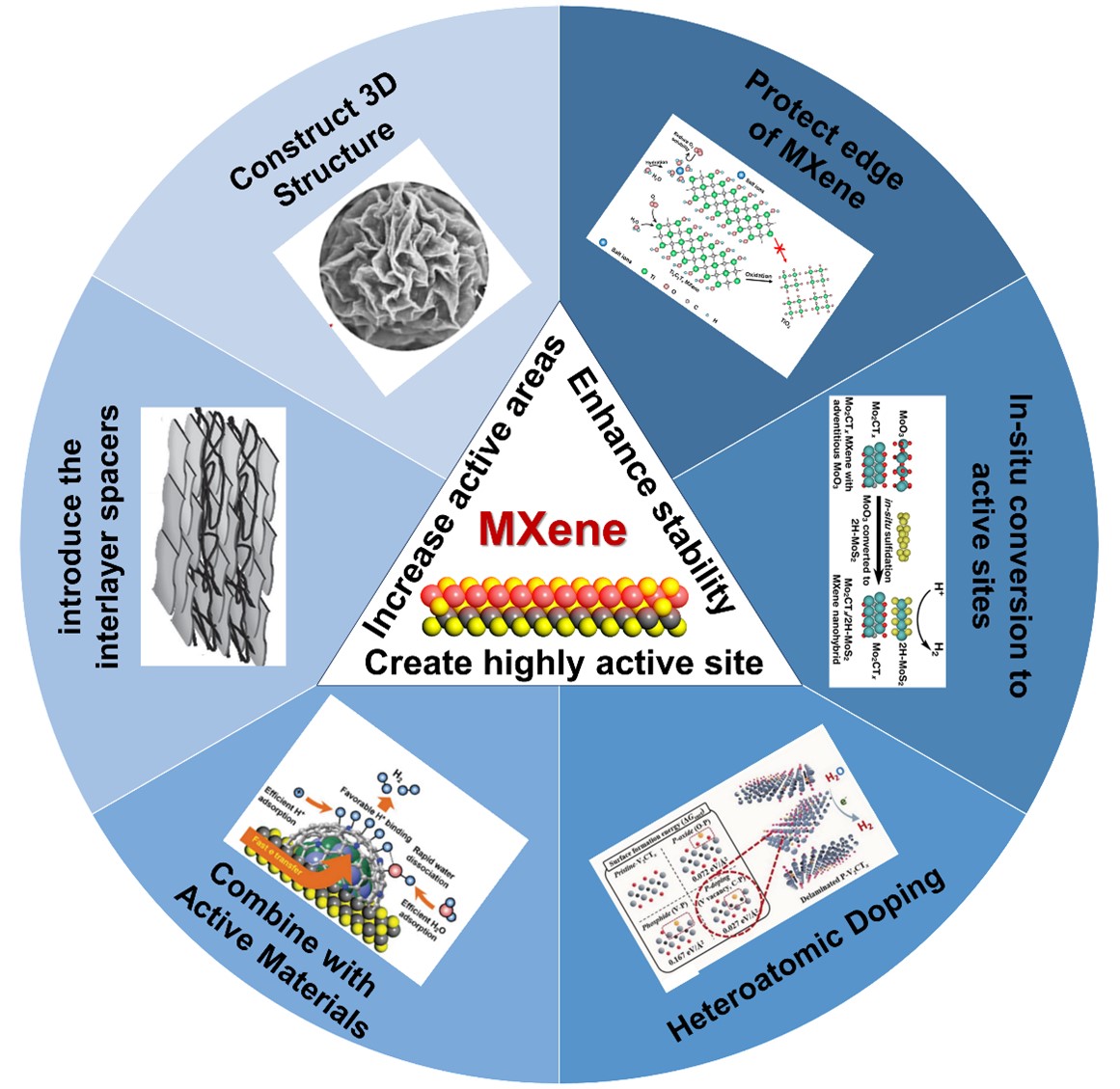X.H. Wu, Y. Wang and Z.-S. Wu*
iScience, 2024, Accepted.

MXenes are promising materials for electrocatalysis due to their excellent metallic conductivity, hydrophilicity, high specific surface area and excellent electrochemical properties. However, they still suffer from easy restacking and low oxidation stability, resulting in limited intrinsic activity for electrocatalysis. To this end, a lot of structure-defined MXene-based electrocatalysts have been designed and developed to boost their activity and stability. Herein, we summarized the recent advancement of MXene-based materials for electrocatalysis, and highlight their key challenges and opportunities. In particular, this review emphasizes on the major design principles of MXene-based electrocatalysts, including (i) coupling MXene with active materials or heteroatomic doping to improve the intrinsic activity by regulating the electronic structure of active sites and creating synergistic catalyst sites; (ii) construction of 3D MXene structure via introducing interlayer spacers that can avoid stacking of MXene to increase active areas and form fast mass-charge transfer channel; and (iii) covering the edge of MXene and in-situin situ transforming the surface of MXene to stable active substance that inhibits the oxidation of MXene and then enhances the stability. Consequently, MXene-based materials exhibit outstanding performance for a variety of electrocatalytic reactions. Finally, the key challenges and promising prospects of the practical applications of MXene-based electrocatalysts are briefly proposed. This review provides guidance for low-cost, large-scale production of highly active and durable MXene-based electrocatalysts for practicalindustrial applications.
